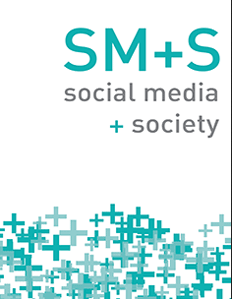从破坏性的抗议到被破坏的网络?德国推特/X“周五为未来”和“中兴一代”辩论的两极分化程度分析
IF 5.5
1区 文学
Q1 COMMUNICATION
引用次数: 0
摘要
研究不同形式的气候抗议如何影响社交媒体辩论,对于理解它们在社会气候政策话语中的作用至关重要。这项研究比较了围绕Twitter/X上破坏性和非破坏性运动的辩论,询问它们在多大程度上导致了意识形态和情感上的两极分化。我们使用自动内容和网络分析(N = ~5,000,000)以及手动内容分析(N = 2,830)对2022年和2023年编制的数据进行了分析,分析了围绕德国两个著名气候运动——未来星期五和最后一代——的辩论。在此过程中,我们确定了影响在线辩论结构的事件类型、(极端)框架、用户和交互。结果揭示了两场辩论中两极分化的网络,气候抗议者的对手推动了话语两极分化。然而,“最后一代”的争论有更多的敌对用户,更极端的框架,更有害的跨群体互动,以及更少的多样化网络集群。“最后一代”产生了更高的个人用户参与度,这表明关于破坏性抗议的辩论在吸引注意力方面是有效的,尽管代价是分散了对气候政策的注意力,扩大了敌对网络。这次辩论比周五在Future上的辩论更加两极化,用户分成了对立的阵营,站在抗议者一边的政治和新闻演员更少。因此,破坏性抗议释放了两种类型的关联行动:一个支持网络比非破坏性抗议更广泛地捍卫抗议者和他们的目标,以及一个由我们称之为“关联反击”驱动的对抗性反弹网络。本文章由计算机程序翻译,如有差异,请以英文原文为准。
From Disruptive Protests to Disrupted Networks? Analyzing Levels of Polarization in the German Twitter/X Debates on “Fridays for Future” and “Letzte Generation”
Examining how different forms of climate protest affect social media debates is critical to understanding their role within societal climate policy discourse. This study compares debates surrounding disruptive and non-disruptive movements on Twitter/X, asking to what extent they lead to ideologically and affectively polarized networks. We analyzed debates around two prominent German climate movements—Fridays for Future and Last Generation—using automated content and network analyses ( N = ~5,000,000) and manual content analyses ( N = 2,830) of data compiled during 2022 and 2023. In doing so, we identified the types of events, (extreme) frames, users, and interactions that shape the structure of the online debates. The results reveal polarized networks in both debates, with the climate protesters’ antagonists driving discursive polarization. The Last Generation debate, however, has a significantly higher number of antagonistic users, more extreme frames, more toxic cross-group interactions, and less diverse network clusters. Last Generation generated higher individual user engagement, suggesting that debates about disruptive protests are effective at attracting attention, albeit at the cost of distracting from climate policy and expanding antagonistic networks. This debate was more polarized than that around Fridays for Future, dividing users into opposing camps, with fewer political and journalistic actors being on the protesters’ side. Thus, the disruptive protests unleashed two types of connective action: a supportive network that defended the protesters and their goals more extensively than during non-disruptive protests, and an antagonistic backlash network driven by what we term “connective counteraction.”
求助全文
通过发布文献求助,成功后即可免费获取论文全文。
去求助
来源期刊

Social Media + Society
COMMUNICATION-
CiteScore
9.20
自引率
3.80%
发文量
111
审稿时长
12 weeks
期刊介绍:
Social Media + Society is an open access, peer-reviewed scholarly journal that focuses on the socio-cultural, political, psychological, historical, economic, legal and policy dimensions of social media in societies past, contemporary and future. We publish interdisciplinary work that draws from the social sciences, humanities and computational social sciences, reaches out to the arts and natural sciences, and we endorse mixed methods and methodologies. The journal is open to a diversity of theoretic paradigms and methodologies. The editorial vision of Social Media + Society draws inspiration from research on social media to outline a field of study poised to reflexively grow as social technologies evolve. We foster the open access of sharing of research on the social properties of media, as they manifest themselves through the uses people make of networked platforms past and present, digital and non. The journal presents a collaborative, open, and shared space, dedicated exclusively to the study of social media and their implications for societies. It facilitates state-of-the-art research on cutting-edge trends and allows scholars to focus and track trends specific to this field of study.
 求助内容:
求助内容: 应助结果提醒方式:
应助结果提醒方式:


